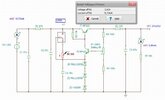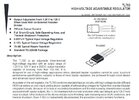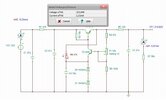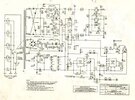Pim Driessen
Member
Dear Forum Members,
The plan is to make a tube preamplifier, the amplifier itself is actually already present as far as the schematic is concerned.
But the stabilized power suply is not quite as desired.
Would like to put in a power source to make the zener diodes more stable and thus make the whole power supply more stable.
Since we are talking about 250 volts DC voltage, not many components are eligible, an LR8N has been thought of that can be used up to 450 volts, but can only be used up to 10 mA and then with this IC the difference between in and output are 20 volts.
Using a TL783 might be possible, but I wouldn't know how to fit it myself.
Who has an idea for a power source that is capable of doing its job at high voltage.
Greeting,
Pim
The plan is to make a tube preamplifier, the amplifier itself is actually already present as far as the schematic is concerned.
But the stabilized power suply is not quite as desired.
Would like to put in a power source to make the zener diodes more stable and thus make the whole power supply more stable.
Since we are talking about 250 volts DC voltage, not many components are eligible, an LR8N has been thought of that can be used up to 450 volts, but can only be used up to 10 mA and then with this IC the difference between in and output are 20 volts.
Using a TL783 might be possible, but I wouldn't know how to fit it myself.
Who has an idea for a power source that is capable of doing its job at high voltage.
Greeting,
Pim





